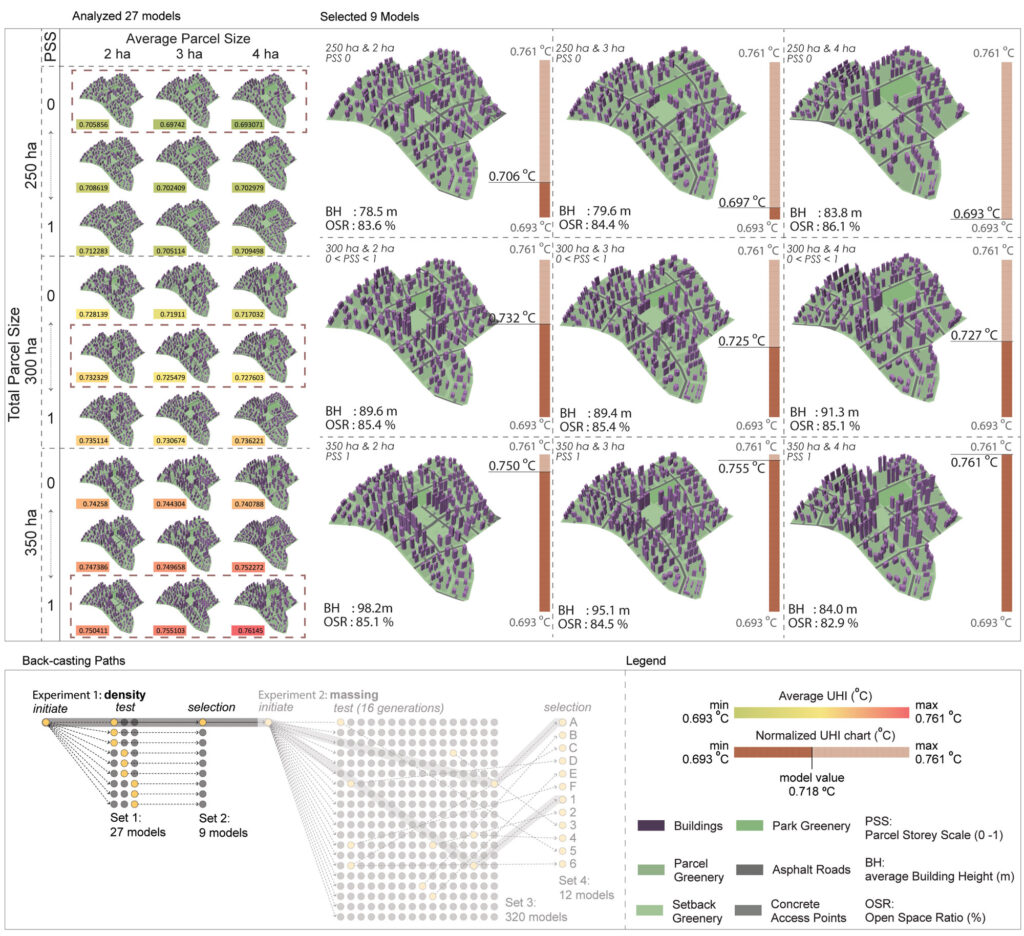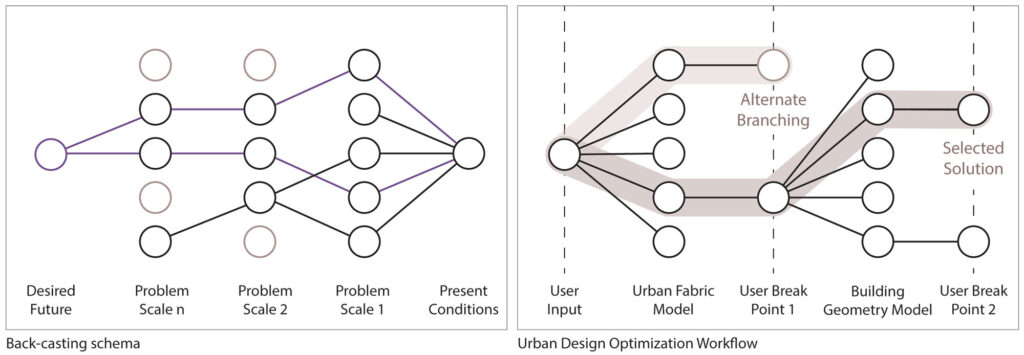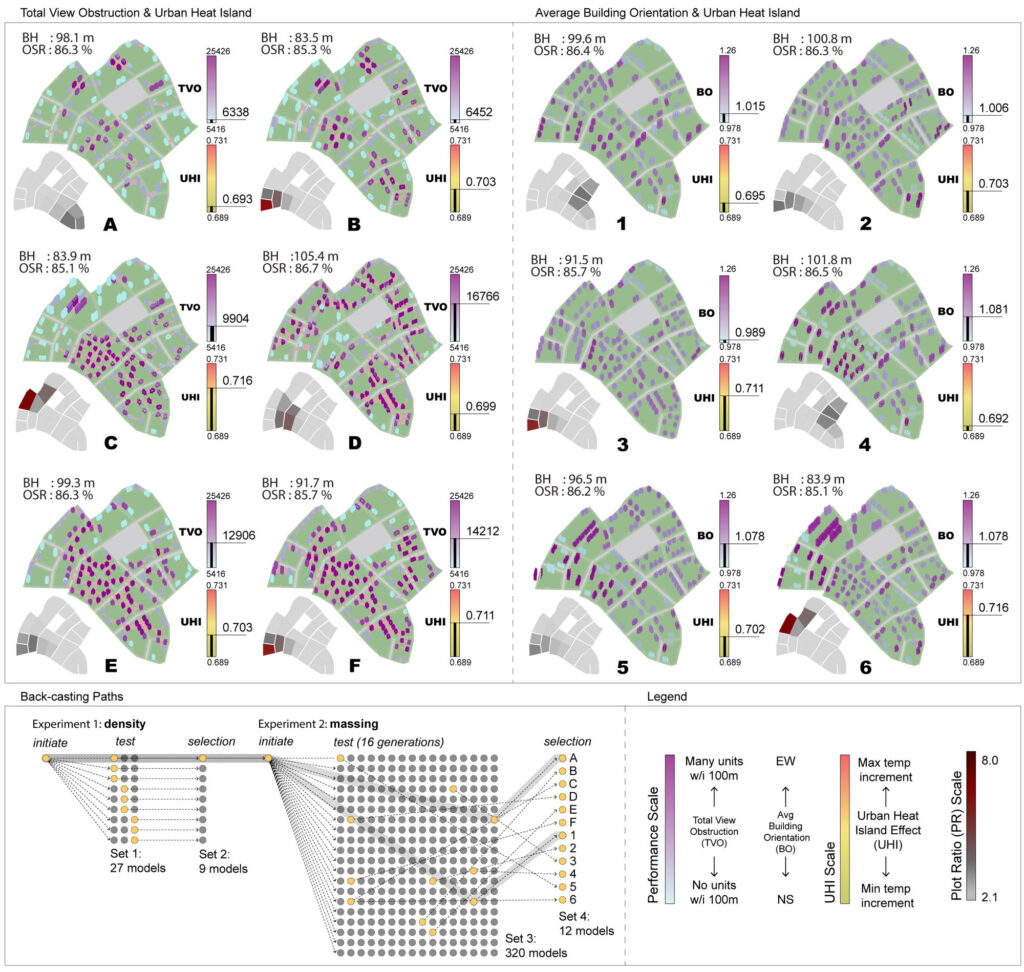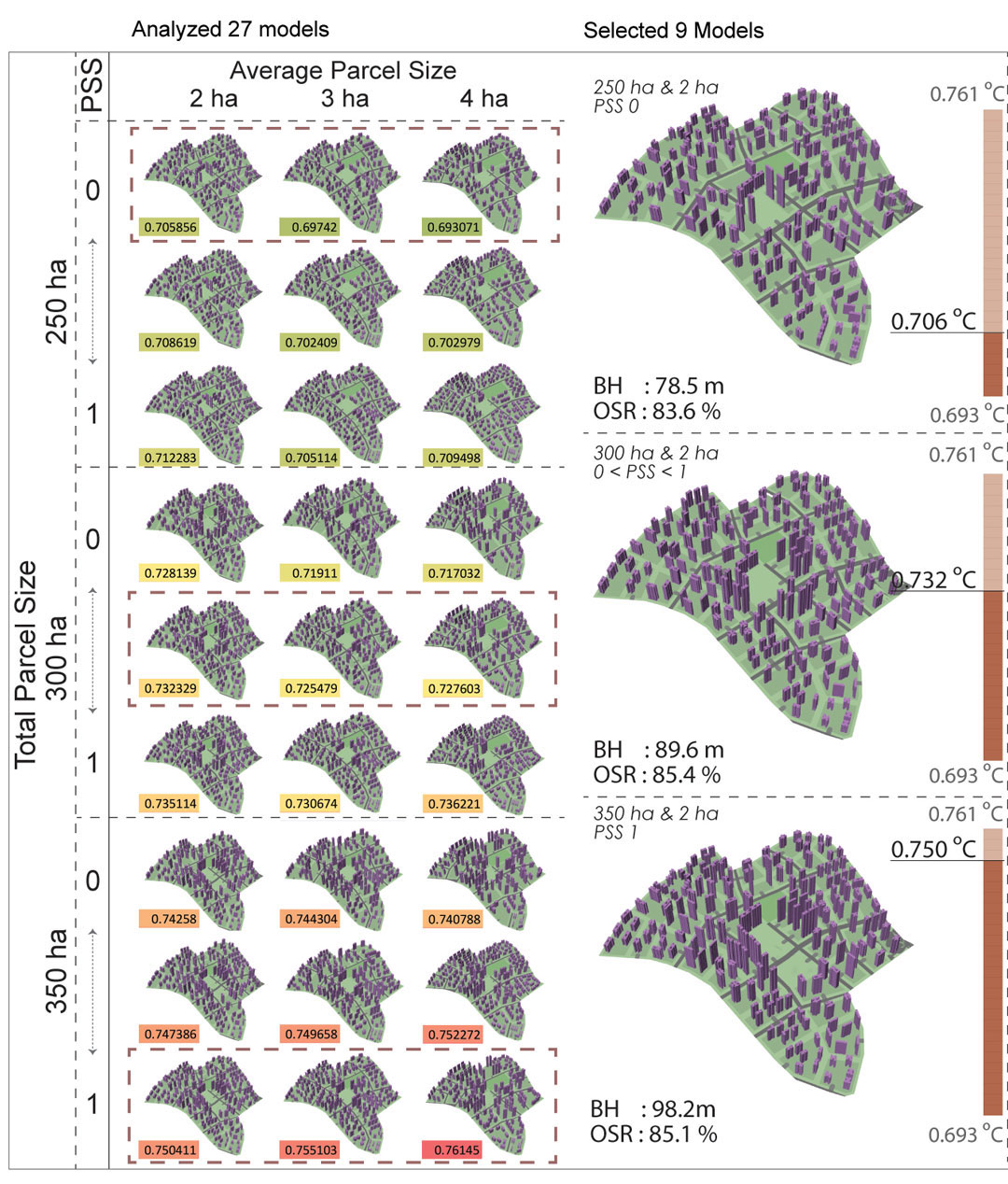Concern to act upon anthropogenic climate change has led numerous cities to adopt ambitious targets for reduced emissions or improved resilience, with city designers called upon to deliver concrete plans to achieve these complex goals via a process widely referred to as back-casting. This project demonstrated the back-casting capabilities of a web-based urban design optimization tool developed by my research group.

The project explored a case study of city district in Singapore, where urban heat island effect must be minimized within a range of viable densities. The research addresses the ability of the proposed tool to support key back-casting priorities of user participation and higher order learning in parallel with design optimization problems of computational efficiency, data structuring, and result analytics.



Design optimization problems are typically visualized via design space (see above left representation of model parameter values like parallel coordinate plots) and solution space (typically represented as one or multiple 2d tradeoffs between conflicting objectives as shown above right.)

In this research we have added a pathways visualization, allowing solutions across design scales to be sequentially recombined in search of multiple scenarios which can fulfill the district design goals (in this case, minimizing urban heat island effect.)

Credits:
PI: F Peter Ortner
Research Fellow: Elif Esra Aydin
PhD Student: Tay Jing Zhi
Research Assistant: Zebin Chen, Anna Yenardi

